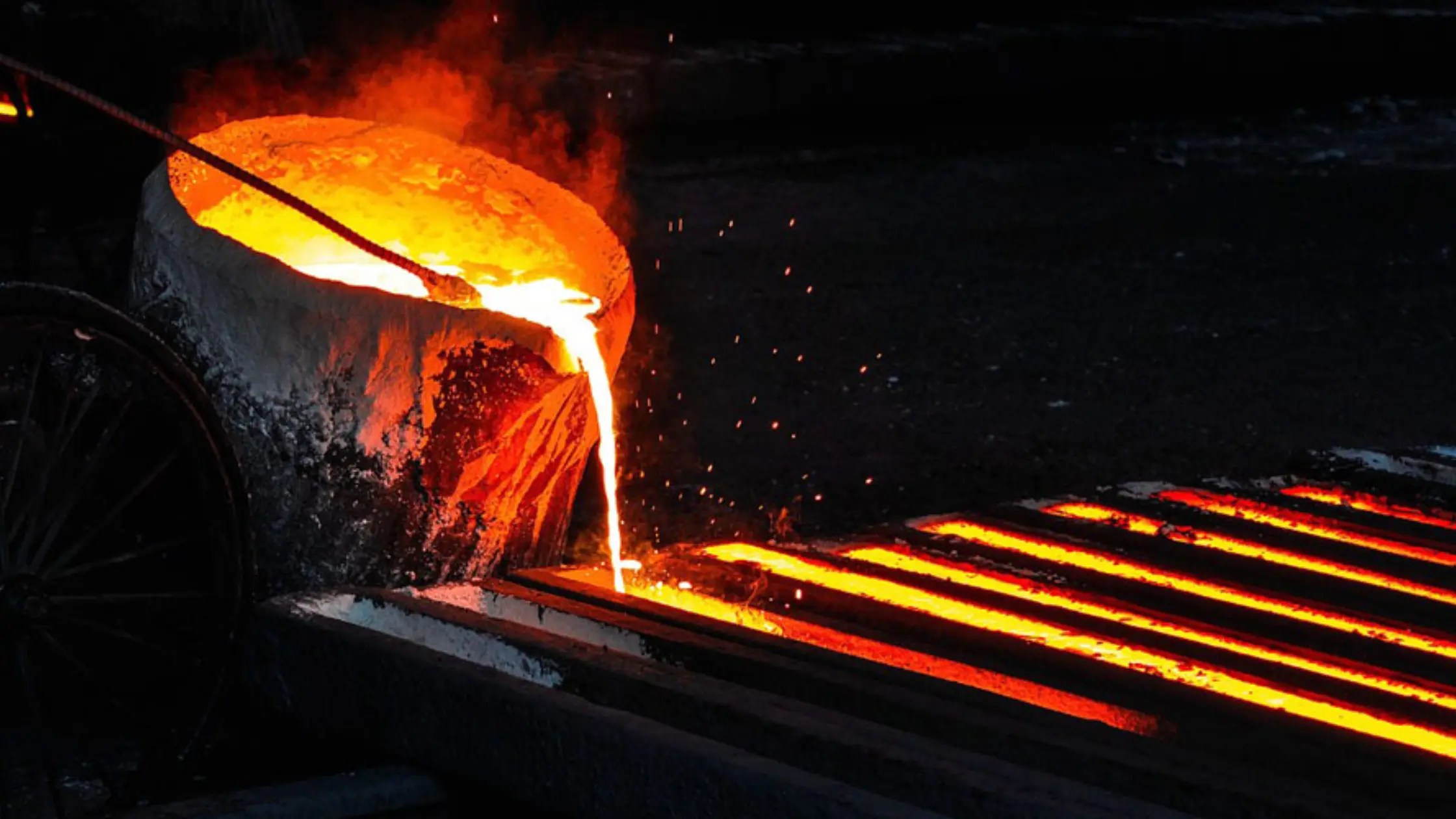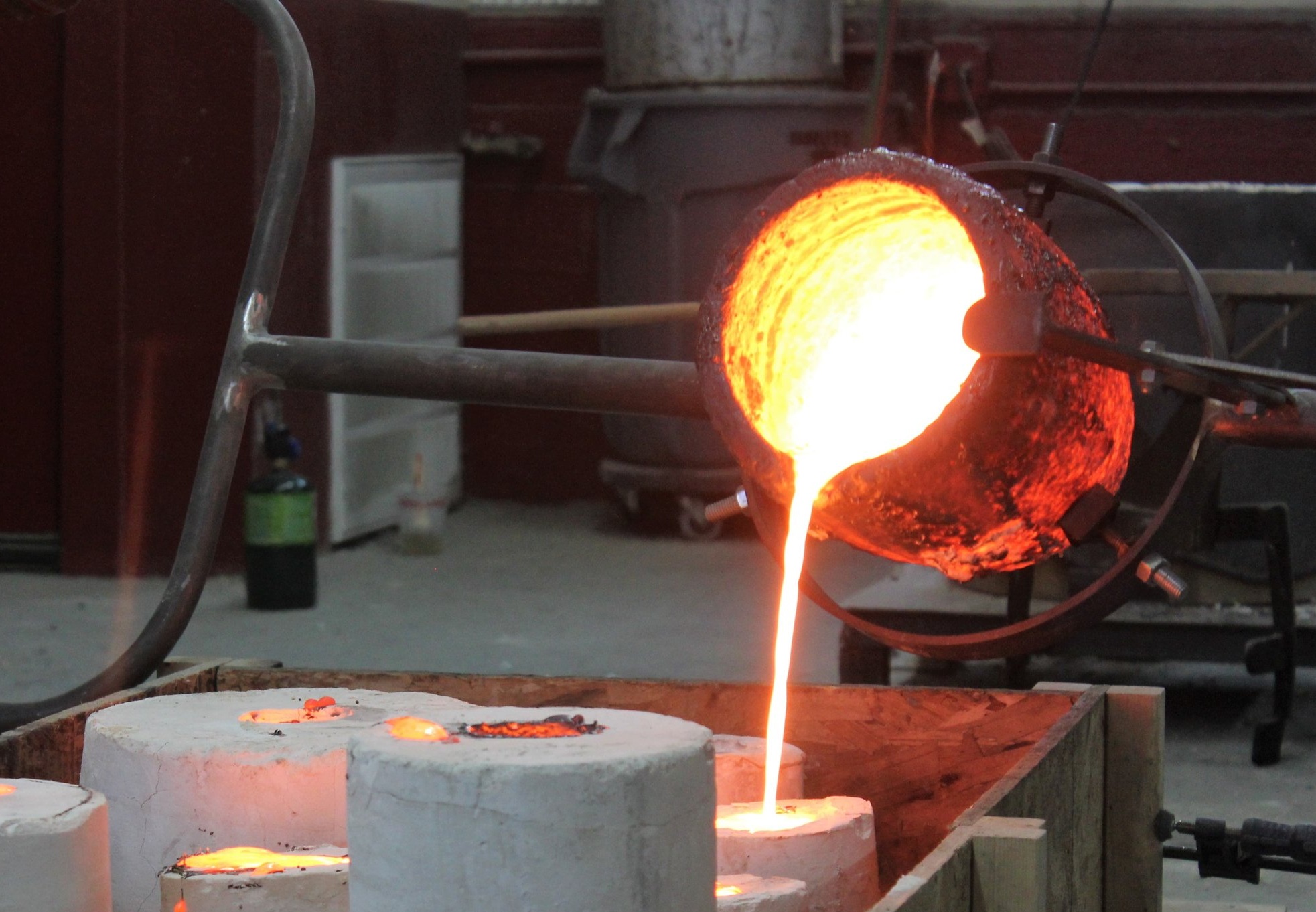A Deep Dive Into Steel Foundries: Key Providers and Their Influence On Production
Metal shops are indispensable to modern-day production, supplying essential solutions that form the manufacturing landscape. They concentrate on various casting procedures, guaranteeing precision and top quality in steel elements. The advancement of technology and sustainable practices has even more affected their procedures. As markets increasingly count on these shops, comprehending their crucial services and the implications for manufacturing efficiency comes to be crucial. What obstacles and technologies lie in advance for this vital industry?
Understanding Steel Casting Processes
Steel spreading processes transform fluid steel into solid things via different methods, each customized to details applications and products. Among one of the most typical techniques are sand casting, financial investment casting, and die spreading, each offering distinctive benefits. Sand casting uses a mold and mildew made of sand, enabling the production of large components at a fairly inexpensive. Financial investment spreading, on the other hand, entails producing a wax pattern that is covered in ceramic, producing extremely comprehensive and complicated shapes. Die casting utilizes high stress to compel liquified metal into a mold and mildew, which is perfect for automation of tiny, specific parts. These procedures enable a wide variety of steels to be used, consisting of light weight aluminum, steel, and bronze, fitting varied industrial demands. The selection of an ideal casting technique depends upon variables such as required resistances, manufacturing volume, and product buildings, influencing the general performance and performance of completion items.
The Significance of Precision Spreading
Accuracy spreading plays a crucial function in creating components that demand high precision and elaborate information. This approach, frequently described as investment spreading, enables limited resistances and complicated geometries, making it indispensable in markets such as aerospace, vehicle, and clinical gadgets. By making use of wax patterns that are covered with a ceramic shell, accuracy spreading enables the development of get rid of smooth surface areas and very little finishing needs.

Alloy Growth and Product Option
In the domain of steel foundries, alloy growth and material option are essential aspects affecting the efficiency and long life of cast components. The option of alloy straight affects mechanical residential or commercial properties, such as ductility, toughness, and deterioration resistance, necessary for meeting particular application requirements. Shops frequently involve in substantial study and testing to optimize alloy compositions, customizing them to the one-of-a-kind needs of numerous sectors, consisting of automotive, aerospace, and construction.
Product selection additionally includes reviewing aspects like availability, manufacturability, and price, guaranteeing that the selected alloy lines up with production capabilities and budget plan restrictions. Advanced simulation devices and analytical techniques are utilized to forecast the behavior of various alloys under varying problems, providing beneficial insights for engineers. Inevitably, reliable alloy development and product choice enable factories to generate high-quality parts that improve operational effectiveness and integrity in their desired applications.
Cutting-edge Molding Strategies
Reinventing the manufacturing process, ingenious molding methods play a critical role in boosting the effectiveness and top quality of cast parts in steel foundries. Strategies such as 3D printing and vacuum molding have emerged as game changers, enabling detailed layouts and decreased preparations. These approaches allow factories to produce molds with intricate geometries that conventional methods commonly battle to accomplish.
Furthermore, making use of sophisticated materials for molds, such as composite materials, enhances durability and reduces wear, resulting in longer manufacturing runs. Fast prototyping more enables fast versions, helping with much faster development cycles and making it possible for producers to react more promptly to market needs.
Furthermore, automation in molding procedures simplifies procedures, minimizing human mistake and raising throughput. By integrating these ingenious approaches, steel foundries can enhance their manufacturing capacities, eventually bring about better spreadings and enhanced total performance in the competitive production landscape.
Quality Assurance in Metal Foundries
Quality control in metal foundries is crucial for making certain the stability and efficiency of cast items. It incorporates numerous examination techniques and requirements, along with issue detection techniques to determine prospective problems early in the manufacturing procedure. Furthermore, robust quality control processes are vital for preserving uniformity and meeting industry demands.
Examination Techniques and Requirements
Assuring the honesty of steel spreadings calls for extensive examination techniques and adherence to developed criteria. Steel factories implement different assessment approaches to review the high quality of cast products, consisting of aesthetic evaluations, dimensional checks, and non-destructive testing (NDT) These techniques assist to determine possible issues early in the production process. Requirements such as ASTM and ISO provide standards for appropriate top quality levels and testing treatments, ensuring that shops keep regular top quality across their assembly line. Compliance with these standards not only boosts product dependability but also cultivates trust amongst clients. By prioritizing evaluation strategies, metal foundries can mitigate dangers connected with issues and warranty that their castings satisfy customer specifications and industry needs.
Problem Discovery Methods
Efficient problem detection approaches are important to maintaining high criteria in steel factories. These methods incorporate a range of techniques aimed at determining blemishes in spreadings before they are refined further. Typical techniques include visual evaluation, which relies upon the skilled eye of inspectors to spot surface area imperfections, and non-destructive testing (NDT) techniques such as ultrasonic testing and radiography, which disclose inner defects without damaging the product. Furthermore, automated systems employing artificial intelligence and artificial intelligence are significantly made use of to examine data and determine abnormalities. Each approach plays a crucial duty in guaranteeing the stability of the final item, minimizing waste, and enhancing overall manufacturing efficiency. By executing robust flaw discovery procedures, shops can copyright their credibility for top quality.
High Quality Assurance Processes
In metal factories, a complete quality control process is essential for creating high-performing and dependable castings. This procedure incorporates different stages, including basic material examination, in-process surveillance, and last item evaluation. By implementing standardized procedures, foundries can methodically recognize and fix issues prior to Metal Casting they intensify into costly issues. Advanced strategies, such as non-destructive screening and metallurgical evaluation, are used to evaluate the integrity of spreadings. Documents and traceability are important elements, guaranteeing that each action of production meets strict quality requirements. Educating employees in high quality control methods even more boosts the efficiency of these processes. Eventually, a robust quality control structure not only enhances operational performance however also enhances customer depend on and fulfillment in the factory's result.
The Function of Modern Technology in Foundry Operations
Innovation changes factory procedures by improving accuracy, security, and efficiency. Automation plays a vital function, streamlining processes such as mold making and metal putting, thus minimizing labor costs and decreasing human error. Advanced computer-aided design (CAD) software program enables specific modeling of components, helping with quicker modifications and iterations throughout manufacturing.
The combination of robotics in jobs like product handling and finishing processes raises productivity and assurances regular quality. Real-time monitoring systems and data analytics offer important understandings into functional performance, enabling timely interventions and maintenance, which ultimately extends devices life-span

The adoption of 3D printing technology even more allows quick prototyping and personalized solutions, substantially reducing lead times. Additionally, advanced materials modern technology improves the properties of alloys, boosting spreading performance. To sum up, technical advancements are necessary in enhancing shop operations, enabling manufacturers to fulfill the increasing demands for high quality and effectiveness in the competitive steel market.
Environmental Factors To Consider in Steel Casting
Environmental factors to consider in metal casting play a significant role in forming market methods. Effective waste administration, progressed discharge control modern technologies, and making use of sustainable products are important for minimizing the ecological footprint of shops. Addressing these variables is essential for advertising a more lasting future in metal manufacturing.

Waste Administration Practices
Reliable waste monitoring methods are important in the metal spreading market to reduce environmental influences. Aluminum Casting. Shops produce different types of waste, consisting of metal sand, scrap, and chemical residues. Implementing recycling programs enables the repurposing of metal scrap, decreasing the demand for virgin materials and lessening land fill payments. Furthermore, factories often utilize sand recovery procedures, which recycle and recoup sand numerous times, thus decreasing waste generation. Correct disposal approaches for dangerous products, such as binding representatives and solvents, are critical to avoid soil and water contamination. Moreover, employee training on waste segregation and decrease techniques can boost general effectiveness and sustainability. With these methods, metal factories can significantly lower their environmental footprint while maintaining production efficiency
Exhaust Control Technologies
As the steel casting industry develops, the application of sophisticated exhaust control modern technologies comes to be progressively crucial for decreasing damaging pollutants launched throughout manufacturing procedures. These innovations incorporate various methods, including electrostatic precipitators, scrubbers, and catalytic converters, which effectively capture and counteract discharges before they get in the ambience. By incorporating such systems, foundries can substantially decrease particle issue, volatile natural compounds, and various other harmful exhausts. In addition, compliance with stringent ecological laws not just reduces ecological influence but also improves the market's reputation and operational efficiency. The adoption of these modern technologies mirrors a dedication to lasting practices, making certain that steel casting operations can meet the expanding demand while prioritizing ecological health and wellness.
Sustainable Products Usage
Sustainable products use in metal spreading plays a vital role in decreasing the market's eco-friendly footprint. Factories are significantly taking on recycled metals, which considerably minimize the need for virgin resources and reduced energy usage throughout the production process. In addition, making use of green binders and additives enhances the sustainability of casting operations by lessening hazardous discharges and waste. Technologies in material scientific research also permit for the growth of biodegradable options that do not jeopardize item top quality. Shops are implementing life-cycle evaluations to examine the environmental influence of products throughout their life expectancy, advertising more responsible sourcing and use. Generally, these methods contribute to a more lasting and environmentally aware metal casting market, straightening with global initiatives to reduce carbon impacts.
Regularly Asked Inquiries
What Are the Key Types of Metal Used in Foundries?
Foundries largely make use of metals such as iron, aluminum, magnesium, and copper. These materials are picked for their one-of-a-kind buildings, which influence the casting procedure and the performance characteristics of the last products manufactured.
Just How Do Factories Guarantee Employee Security During Procedures?
Factories assure employee safety and security via extensive training, correct tools, air flow systems, and adherence to safety and security guidelines. Routine assessments, personal safety gear, and emergency procedures further improve a risk-free working environment for workers engaged in steel production.
What Is the Typical Preparation for Casting Production?
The normal lead time for spreading production differs, generally ranging from a few weeks to several months. Aspects affecting this timeline include complexity of the design, product accessibility, and the shop's production capability and scheduling.
Just How Do Foundries Deal With Waste and Recycling Processes?
Foundries manage waste and recycling by implementing processes such as steel recovery, sand recycling, and correct disposal of unsafe products, thereby decreasing ecological impact and promoting sustainability in their operations while adhering to regulative criteria.
What Industries A Lot Of Typically Use Metal Foundry Providers?
Steel foundry solutions are largely made use of in markets such as vehicle, aerospace, construction, and equipment manufacturing. These industries depend on foundries for creating actors steel parts important for various applications and item growth.
Steel foundries are essential to contemporary production, supplying vital solutions that shape the production landscape. Metal spreading processes transform liquid metal into strong things with different techniques, each tailored to particular applications and materials. As technology advances, the relevance of accuracy spreading continues to expand, driving innovation and effectiveness in steel shop operations. Revolutionizing the production process, innovative molding strategies play a pivotal function in improving the effectiveness and quality of cast components in steel factories. In metal factories, a thorough top quality guarantee procedure is vital for generating trustworthy and high-performing castings.